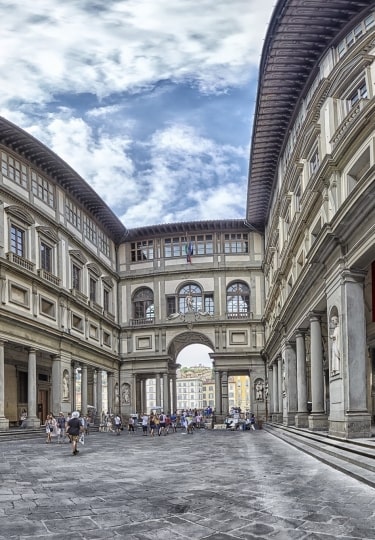Sometimes, the best way to get a sense of a new city is through its museums. What constitutes a world-class museum is highly subjective, of course, and we all have our favorite themes. However, if you’re inspired by anything from great artistic masterpieces to maritime history, sustainability, pop culture, futuristic architecture, and yes, even herrings, here’s a collection of the best museums in the world.
Musée d’Orsay, Paris
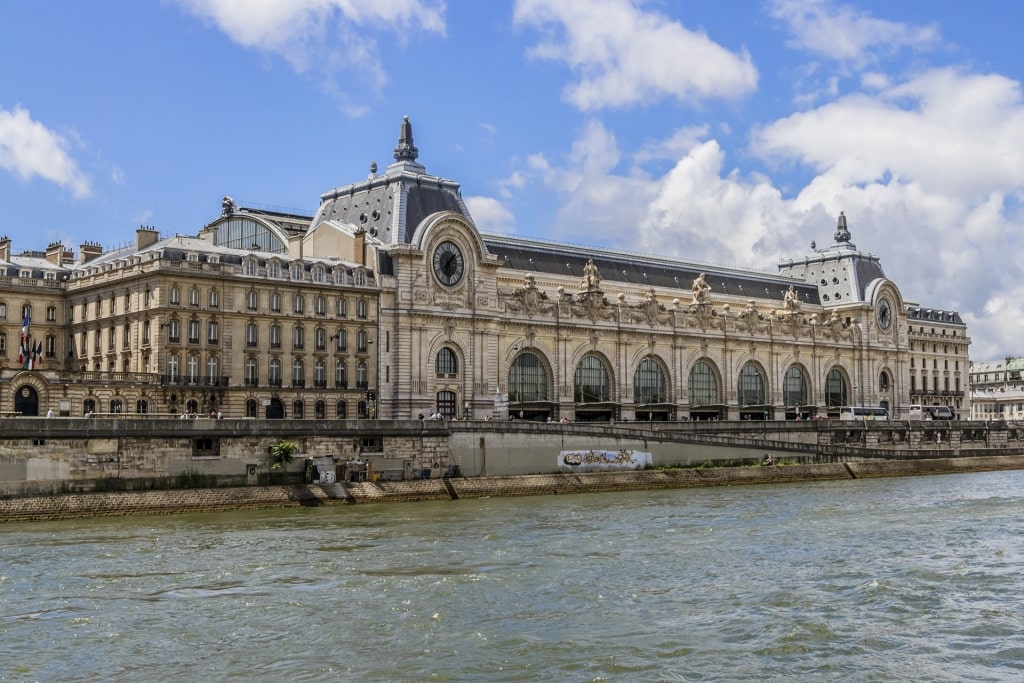
Musée d’Orsay, Paris
You’ll need to visit the Louvre to see the Mona Lisa and the Venus de Milo, but for the world’s biggest collection of impressionist art, the Musée d’Orsay in Paris is the place to go. The museum is housed in a magnificent art nouveau former train station on the banks of the Seine, opposite the Tuileries Gardens.
Inside this famous Parisian landmark, you’ll find masterpieces from the period between 1848 and 1914, the peak of the Impressionist era, by the likes of Monet, Manet, Degas, Pissarro, Renoir, Van Gogh, and Cézanne. Make a beeline for the highlights if you’re short on time: The Card Players by Cézanne; Monet’s gloriously dreamy Houses of Parliament; and Van Gogh’s iconic Self-Portrait.
Read: One Day in Paris
Museum of Tomorrow, Rio de Janeiro
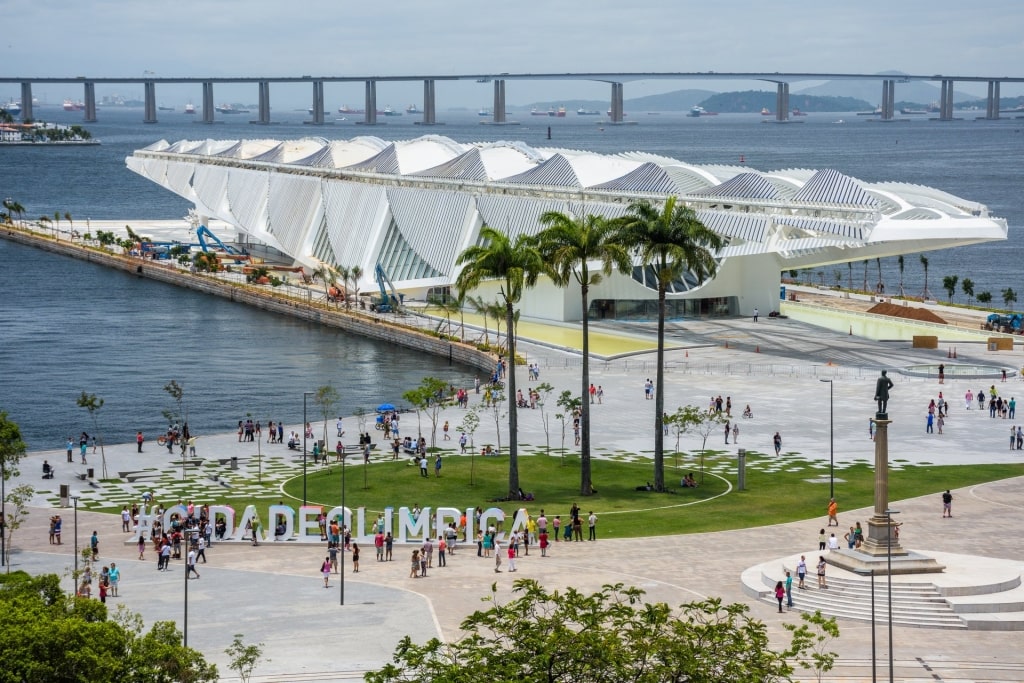
Museum of Tomorrow, Rio de Janeiro
Opened in 2015, Rio’s startling Museo do Amanhã, or Museum of Tomorrow, is one of the best museums in the world dedicated to sustainability. The building, designed by Catalan architect Santiago Calatrava, looks almost organic, like a giant dinosaur skeleton jutting diagonally out over the old port area.
This is no ordinary museum; the main exhibit is almost entirely digital, raising questions about who we are, where we’ve come from, and where we are heading. The dazzling cosmic portal at the entrance, a film squeezing 13.7 billion years of geological and natural evolution into eight minutes, will get you thinking.
The exhibits are interactive and in English as well as in Portuguese and Spanish. By the time you emerge into the sunshine of Rio, you’ll be pondering all sorts of existential questions about climate change and the future of mankind.
Titanic Museum, Belfast
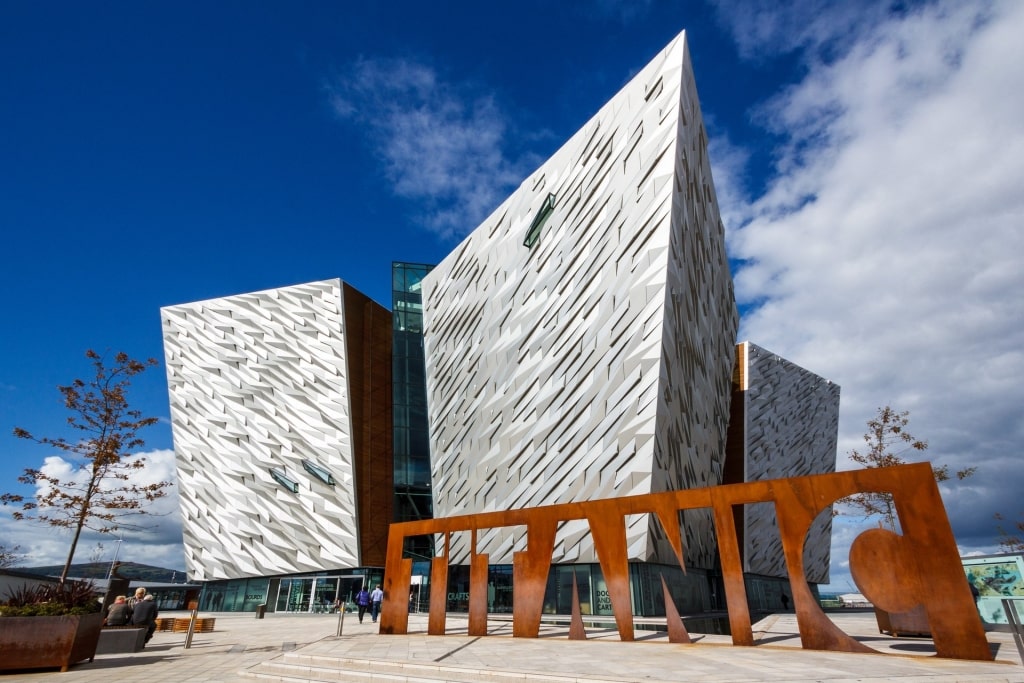
Titanic Museum Photo by Nico Kaiser on Flickr, licensed under CC BY 2.0
Belfast’s striking Titanic Museum may be dedicated to the greatest maritime tragedy in history, but it also offers a fascinating, multi-dimensional insight into the social background of the disaster. The museum is built on the old Harland & Wolff shipyard, where the Titanic was actually constructed at a time when Belfast was booming—and more populous than it is now.
Visiting here is one of the best things to do in Belfast. You can sense the noise and sweat of the yard in a ride through the darkness in small cars suspended on a track. You’ll walk a replica of the deck of the ill-fated liner, stepping inside first-, second-, and third-class cabins, dining areas, and engine rooms. Feel the elation of the launch—virtually, of course.
One somber room is dedicated to the sinking of the Titanic in 1912, while the footage of the wreck, looming out of the darkness, 12,500 feet below the surface of the Atlantic, is enough to give anybody goosebumps.
Galleria Degli Uffizi, Florence
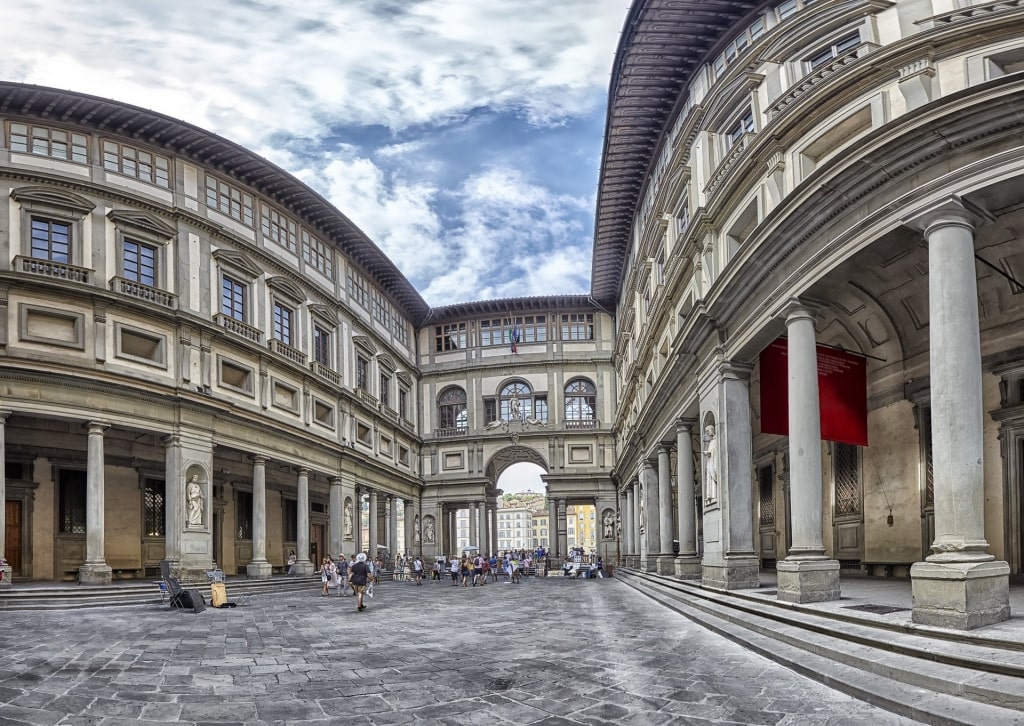
Galleria Degli Uffizi, Florence
One of Italy’s most-visited museums, the Uffizi, which unromantically, means “office,” occupies a grand, 16th-century building on the bank of the river Arno in Florence and houses what’s regarded as the world’s greatest collection of Renaissance art. Don’t miss the Sala di Botticelli, which is packed with legendary works like the gorgeous Birth of Venus and Madonna del Magnificat.
As one of the best places to see art in Florence, you’ll also find exquisite pieces by Michelangelo and Raphael and three astonishing Da Vincis. Check out his Annunciation; you have to view the painting from different angles to get the perspective right, which is what Da Vinci cleverly intended.
If you can get a ticket, add on the Vasari Corridor, a narrow passage connecting the Uffizi to the Pitti Palace across the river. The corridor was built in 1565 to allow the Medici family, the original owners of the building, to move freely between their offices and their residence, avoiding mingling with the commoners in the street.
It’s lined with priceless pieces from the 17th and 18th centuries, not to mention self-portraits by some of the greatest artists in history, including Rembrandt and Velazquez. Because the corridor has been closed for refurbishment, demand will be high for this exclusive visit, so you’ll need to plan ahead.
Read: Two Days in Florence
Van Gogh Museum, Amsterdam
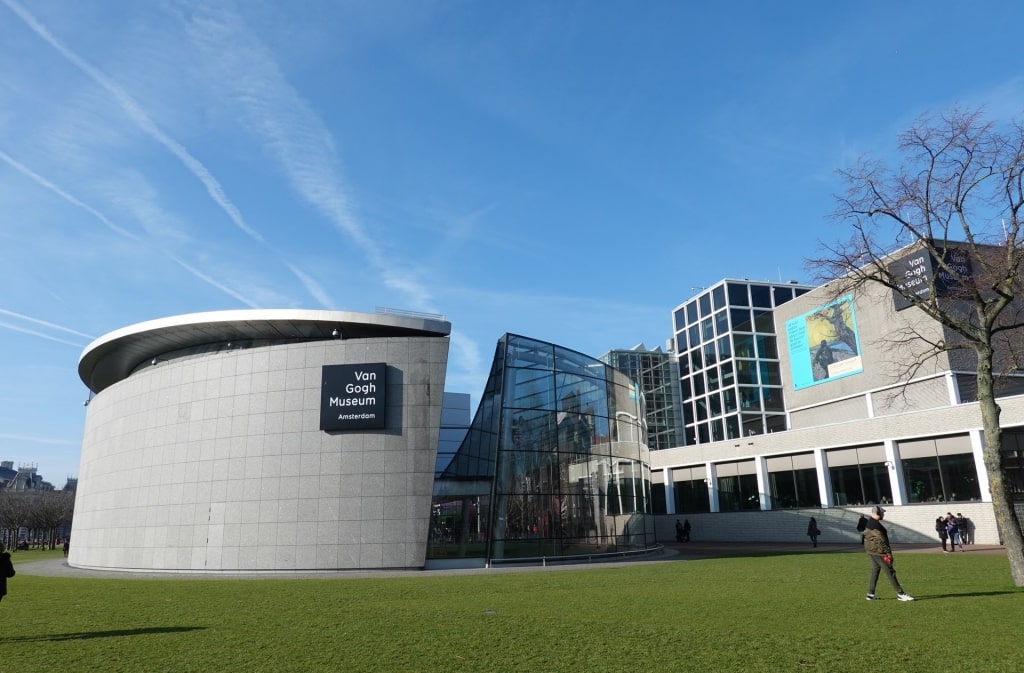
Van Gogh Museum Photo by Richard Mortel on Flickr, licensed under CC BY 2.0
For all things Van Gogh, visit the Van Gogh Museum in Amsterdam, the Netherlands’ most-visited attraction and one of the most famous museums in the world. The museum is more than a gallery—it’s a complete insight into this tormented artist’s life.
You’ll see more than 200 works of art inside this popular art museum in Amsterdam. These include the legendary Sunflowers and Wheatfield Under Thunderclouds, as well as letters, sketches, and exhibitions of other work his genius has inspired. If you’re looking for quirky gifts to take home, drop into the gift shop for everything from Van Gogh-inspired wallpaper, jewelry, bed linen, and even a knitted Van Gogh doll.
Read: Three Days in Amsterdam
MoPOP Museum, Seattle
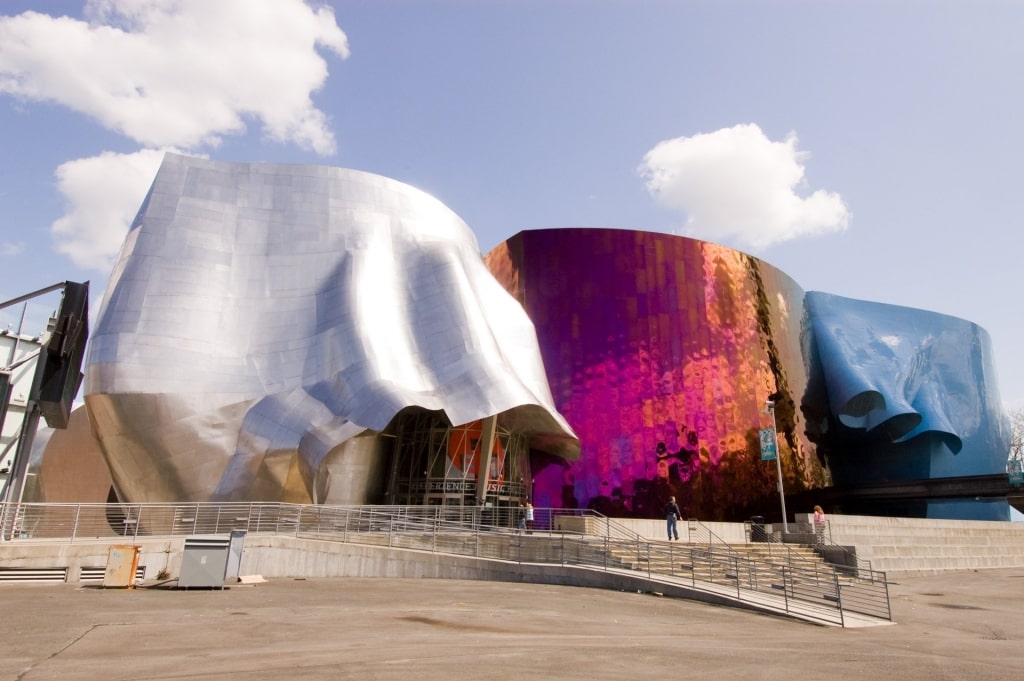
MoPOP Museum, Seattle
The brainchild of Microsoft co-founder Paul Allen, MoPOP in Seattle whisks you on an evocative and whirlwind journey through the history of pop culture, packed with interactive displays covering everything from sci-fi to gaming, cult films, Star Trek, musicians and bands, including Seattle’s own Nirvana.
You can have a private jam session or come away with your own pop video, complete with screaming fans. For adults, MoPOP is a multi-sensory trip down memory lane, while for kids and teens, it’s one giant, cool, musical playground.
You certainly won’t have trouble finding the building. In the shadow of the Space Needle, the curvy, futuristic Frank Gehry masterpiece shimmers with light, its stainless steel and aluminum shingles reflecting silver and mauve, the ever-changing colors representing the fluidity of music.
The Guggenheim Museum, Bilbao
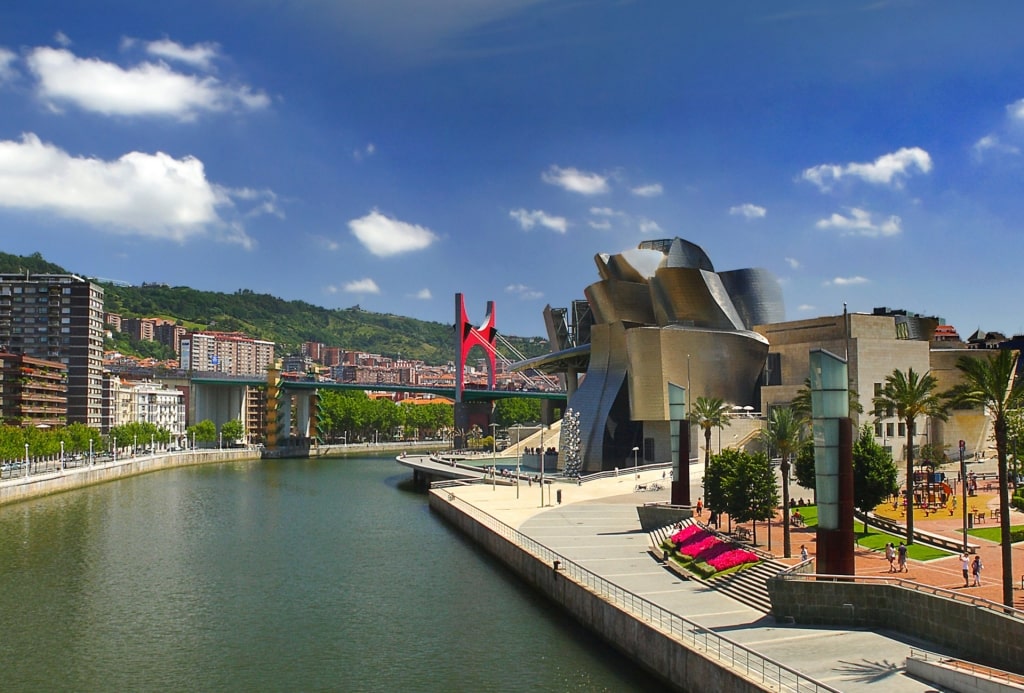
The Guggenheim Museum, Bilbao
Another iconic Gehry structure, the Guggenheim Museum, a gleaming tumble of titanium cliffs, towers, and ships’ prows, has become the must-see attraction of Bilbao for the building as much as its contents. The collection includes pieces from the mid-20th century to the present day, with a strong focus on visiting exhibitions as well.
Pieces to see in the permanent collection include Untitled by Mark Rothko, bright blocks of red and yellow, and Maman, a creepy, 30-foot high bronze, marble, and stainless steel spider by Louise Bourgeois, dedicated to her mother, who was a weaver. Considerably cuddlier is Puppy by Jeff Koons. This giant, stainless steel terrier is carpeted in a bright patchwork of living flowers.
Read: Best Museums in Europe
Acropolis Museum, Athens
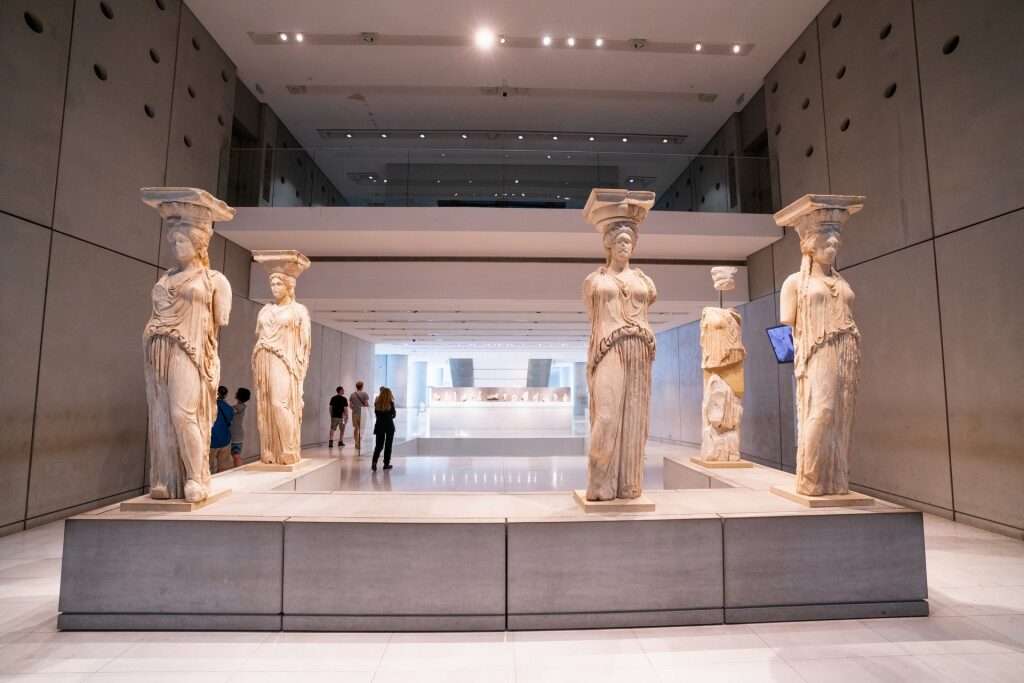
Acropolis Museum, Athens
Once you’ve visited the Parthenon, the crowning glory of the Acropolis Hill in Athens, head down the slope to the Acropolis Museum, one of the best museums in the world. You’ll see thousands of treasures that have been discovered around the site, covering an era stretching from the Bronze Age to Byzantine times.
Brilliant architectural design has created a light-filled, contemporary space, the simplicity of which is the perfect setting for the exquisite statues, columns, vases, and other artifacts on display.
You’ll be instantly captivated by the glass floor, which reveals the ruins of an ancient neighborhood of Athens beneath, uncovered during the museum’s construction. The floor slopes upward, symbolizing the ascent of the slope to the Parthenon, the temple itself always visible through floor-to-ceiling windows.
On the top floor, the Parthenon Gallery is an elaborate frieze of the relief-carved blocks from the upper levels of the actual temple, beautifully lit so you can wander around, admiring the detail with one eye on the original monument. Exquisitely carved marble sculptures are positioned around the space, some originals, others copies of the marbles still controversially housed in London’s British Museum.
Vasa Museum, Stockholm

Vasa Museum, Stockholm
A museum dedicated to failure is a novel idea, but Stockholm’s Vasamuseet (Vasa Museum) tells the story in great style of the ill-fated battleship, the Vasa. Setting sail in August 1628, the Vasa was the pride and joy of Sweden until it capsized minutes into its maiden voyage and sank.
In 1961, the wreck was painstakingly raised from the harbor bed in thousands of pieces and re-assembled. You can walk around the top-heavy ship, almost all of which is original, at four different levels, peering down into the sailors’ quarters and the rum stores. At the end, try the free computer simulation games to design your own Vasa and earn congratulations from the King of Sweden.
Yad Vashem, Jerusalem

Yad Vashem, Jerusalem
A visit to Yad Vashem in Jerusalem, a beautifully designed and poignant Holocaust research center and museum, will leave you feeling both drained and profoundly moved. The design is ingenious; you’re funneled underground through a concrete prism into the galleries of the Holocaust History Museum, being directed one way through the darkness of the build-up in Europe to the Holocaust via artifacts, film, photographs, and video interviews.
It’s utterly harrowing, and you’ll see many people weeping. The emergence into the light, overlooking the green forest at the end, is a metaphor for the end of the genocide. Other exhibits include the Hall of Names, containing photos of hundreds of Jews who were murdered; the Hall of Remembrance, where an eternal flame burns to commemorate those who died in the camps; and the Children’s Memorial, a heartbreaking underground memorial in which candles are reflected in hundreds of mirrors and recorded voices read out, one by one, the names of the 1.5 million children who died.
Picasso Museum, Barcelona
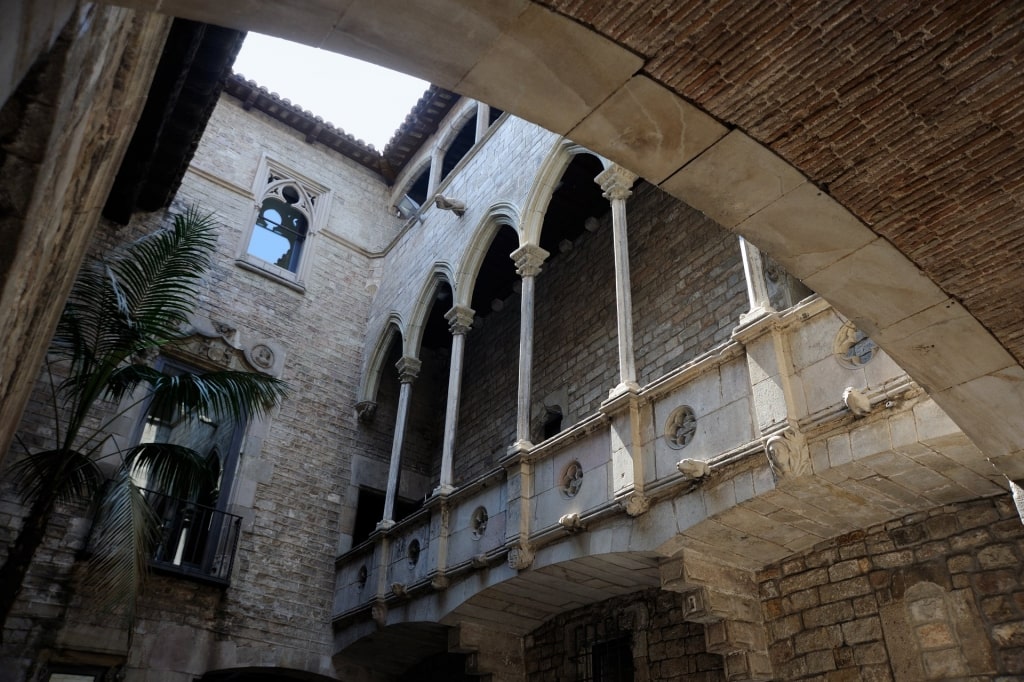
Picasso Museum, Barcelona
Barcelona’s Museu Picasso is understandably one of the city’s biggest attractions and one of the best museums in the world. The museum is housed in five majestic medieval stone mansions in the old city and displays more than 4,000 of the artist’s works, showing his astonishing versatility in everything from sketches to oils.
The museum was developed in 1960 at Picasso’s own request; he spent some of his formative years in Barcelona, from 1895 to 1904, and had his first solo exhibition there, at the Els Quatre Gats bar. Highlights of the museum include Science and Charity, painted when Picasso was only 15; The Pigeons, a sunlit view from his studio in Cannes; and Las Meninas, in the cubist style for which Picasso became famous. There’s an extensive collection of work from the artist’s Blue Period, too.
After the museum visit, make time for refreshments in the nearby Els Quatre Gats (The Four Cats), part of Picasso’s history. This colorful, modernista bar was frequented by the artist and his contemporaries in the early 1900s.
Read: Three Days in Barcelona
Herring Era Museum, Siglufjördur

Herring Era Museum, Siglufjördur
If you visit one museum in Iceland, make it this quirky but immersive dedication to herring fishing. The sparse little harbor of Siglufjördur, accessible on a day trip from Akureyri, prospered from herring fishing until the collapse of fish stocks in 1969. The museum, housed in a 1907 salting station, is now an unlikely attraction for its social history as much as the story of the humble herring.
More than a century ago, during Iceland’s answer to the Gold Rush, this now sleepy fjord was filled with trawlers, its streets buzzing with shops and bars. The museum is a clever, multimedia experience of black-and-white film, artifacts, and memorabilia and gives a real sense of Siglufjördur in its heyday.
You can squeeze into the hold of perfectly preserved fishing smack (kids love this), and see the tiny dorm where the “herring girls”—the salters—once lived, which offers a snapshot of life in this isolated place during the 1950s. Outside, women in traditional costumes demonstrate how the herring was salted to the accompaniment of accordion music, with a chance to sample the herring with rye bread and a shot of schnapps.
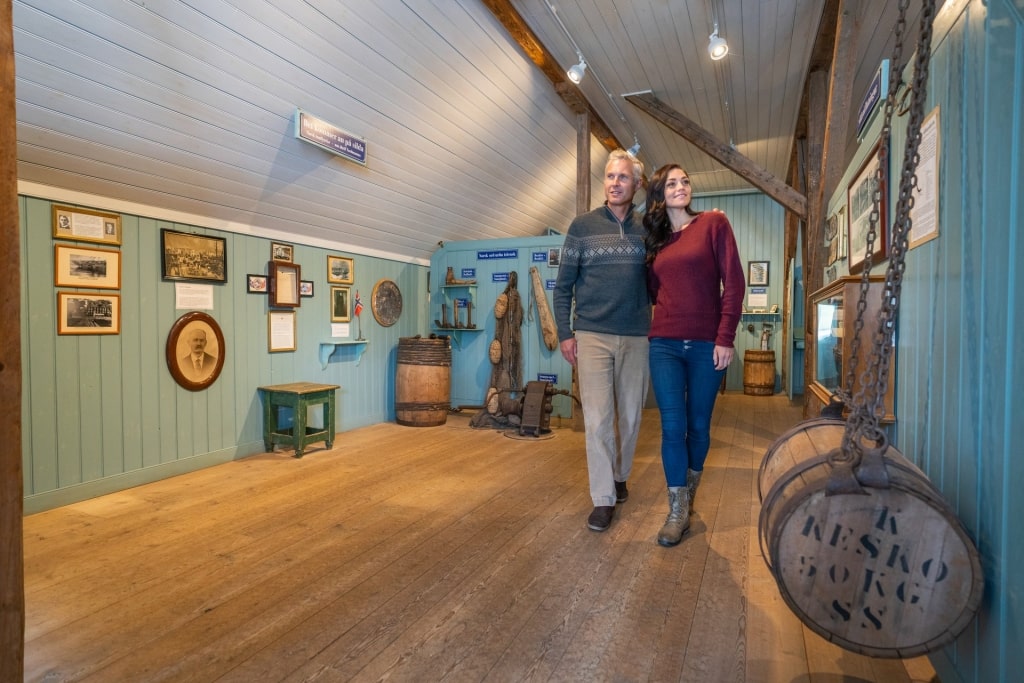
Herring Era Museum, Siglufjördur
You’ll be able to visit all of these wonderful museums and more on a cruise. Browse Celebrity Cruises’ selection of worldwide itineraries on our website and set sail on your next cultural adventure.
